
Movement Ecology
Scope & Guideline
Innovating insights into the dynamics of movement and behavior.
Introduction
Aims and Scopes
- Animal Migration and Movement Patterns:
The journal emphasizes the study of various animal migration phenomena, including long-distance migrations, seasonal movements, and the factors influencing these patterns, such as weather, geography, and ecological interactions. - Impact of Environmental Factors on Movement:
Research frequently explores how environmental variables, including habitat structure, climate, and anthropogenic influences, shape the movement behaviors of various species. - Methodological Innovations in Tracking and Analysis:
The journal promotes advancements in tracking technologies and analytical methods, including GPS, accelerometry, and machine learning, to enhance the understanding of movement ecology. - Behavioral Ecology and Resource Selection:
Papers often investigate how behavioral strategies and resource availability affect movement decisions, highlighting the interplay between behavior and ecological dynamics. - Conservation and Management Implications:
Research published in Movement Ecology often has direct applications to conservation and wildlife management, providing insights into habitat connectivity, species interactions, and the effects of human activity on animal movements.
Trending and Emerging
- Interdisciplinary Approaches:
There is a growing trend towards integrating movement ecology with other disciplines such as genetics, microbiology, and climate science to provide a more holistic understanding of animal behavior and ecology. - Technological Advancements in Tracking:
The increasing use of advanced tracking technologies, such as bio-telemetry and remote sensing, is enabling more precise and comprehensive studies of animal movements across diverse ecosystems. - Effects of Climate Change on Movement:
Research examining the impacts of climate change on migration patterns and habitat use is gaining traction, underscoring the urgency of understanding how changing climates affect animal behaviors. - Social and Environmental Interactions:
Emerging studies are focusing on the influence of social structures and environmental cues on movement patterns, exploring how these factors interact to shape behavior. - Conservation Genetics and Movement:
The integration of genetic tools with movement studies is becoming more prevalent, allowing researchers to explore questions of connectivity and gene flow in relation to animal movement.
Declining or Waning
- Intraspecific Variation Studies:
Research focusing on intraspecific variation in movement has decreased, possibly due to a shift towards broader ecological and environmental analyses rather than detailed individual-level studies. - Traditional Habitat Selection Models:
The use of traditional habitat selection models has waned, as researchers increasingly adopt more complex, data-driven approaches that incorporate multiple environmental factors and behavioral states. - Historical Migration Routes:
Studies exploring historical migration routes and their implications for current behavior have become less prominent, with a trend towards real-time tracking and contemporary ecological interactions.
Similar Journals

ANIMAL BIOLOGY
Advancing Knowledge in Animal Science and EcologyANIMAL BIOLOGY is a distinguished journal published by BRILL, focusing on the dynamic fields of Animal Science and Zoology, as well as Ecology, Evolution, Behavior, and Systematics. With an ISSN of 1570-7555 and an E-ISSN of 1570-7563, this quarterly journal serves as a pivotal platform for researchers and professionals seeking to contribute to the understanding of animal biology across diverse ecological contexts. The journal is recognized with a 2023 Scopus ranking of #234 out of 490 in the Animal Science and Zoology category, placing it within the 52nd percentile, alongside a rank of #409 out of 721 in Ecology, marking a solid contribution to the field. Although it currently holds a Q3 quartile in both categories, its commitment to quality research and novel insights continues to bolster its significance within the academic community. The open access option coupled with its publication history from 2003 to 2024 ensures a wide dissemination of knowledge, drawing in a global audience of researchers, professionals, and students eager to explore the intricacies of animal biology. By promoting high-quality discussions and innovative studies, ANIMAL BIOLOGY plays an essential role in advancing the understanding of life sciences and the evolution of biodiversity.

Animal Biotelemetry
Connecting Animal Science with Cutting-Edge TechnologyAnimal Biotelemetry, an esteemed open-access journal published by SPRINGERNATURE, focuses on the innovative intersection of animal science, bioinformatics, and advanced telemetry techniques. With roots dating back to 2013, the journal is committed to advancing our understanding of animal behavior and ecology through technological applications, fostering interdisciplinary research within the realms of Animal Science and Zoology, Computer Networks and Communications, Instrumentation, and Signal Processing. Recognized for its high quality, Animal Biotelemetry has been categorized in the prestigious Q1 and Q2 quartiles, highlighting its impact and relevance within the academic landscape. The journal boasts impressive Scopus rankings, with a percentile standing of 82nd in Animal Science and Zoology, further establishing its significance among researchers and practitioners. By providing open access to cutting-edge research, it serves as a vital resource for researchers, professionals, and students seeking to explore and contribute to the dynamic fields of animal tracking and monitoring.

European Zoological Journal
Bridging the Gap Between Research and Ecological SolutionsEuropean Zoological Journal, published by Taylor & Francis Ltd, is an esteemed open-access publication dedicated to advancing the exciting field of zoology. Since its inception in 2017, this journal has progressively established itself as a vital resource for researchers, professionals, and students alike. With its Q2 ranking in Animal Science and Zoology as of 2023, the journal ranks in the 69th percentile among its peers, showcasing its influence and contribution to the discipline. The journal’s broad scope covers a wide range of topics within zoology, aiming to foster an understanding of animal biology and conservation efforts. As an open-access journal, it not only enhances the dissemination of knowledge but also encourages collaborative research across global communities. Situated in the United Kingdom, the European Zoological Journal invites submissions that contribute to the evolving discourse in animal sciences, and endeavors to support the scientific community in addressing pressing ecological challenges.

ARDEA
Fostering collaboration in animal science and ecology.ARDEA, published by the Nederlandse Ornithologische Unie, is a prominent journal in the fields of Animal Science, Zoology, and Ecology. With its rich history spanning from 1981 to the present, ARDEA serves as a vital platform for researchers and professionals dedicated to avian studies and the ecological sciences. This quarterly journal is recognized in the Q3 category for both Animal Science and Ecology, as per the latest rankings, and maintains an impressive global standing within its subject areas. Although it operates without an open access model, the journal provides significant insights and contributions to the understanding of bird biology, conservation, and evolution. Researchers and students seeking to advance their knowledge in ornithology and related fields will find ARDEA to be an indispensable resource, promoting high-quality research and fostering academic collaboration.
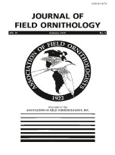
JOURNAL OF FIELD ORNITHOLOGY
Transforming Ornithological Knowledge Through ResearchJOURNAL OF FIELD ORNITHOLOGY, published by the Resilience Alliance, is a premier academic journal dedicated to advancing knowledge in the fields of ornithology, ecology, and animal behavior. With an ISSN of 0273-8570 and a growing E-ISSN of 1557-9263, this journal has been a vital platform for researchers since its inception in 1996, continuing to publish cutting-edge studies up until 2024. The journal is recognized within the academic community, holding a Q2 ranking in Animal Science and Zoology and a Q3 ranking in Ecology, Evolution, Behavior and Systematics as of 2023. While the journal does not currently operate under an open access model, it remains a critical source for researchers, students, and professionals seeking to explore innovative research and discoveries in field ornithology. The diverse range of topics covered underscores its commitment to highlighting significant findings and fostering a deeper understanding of avian species and their ecosystems.
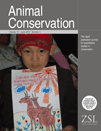
ANIMAL CONSERVATION
Preserving Nature's Legacy, One Study at a Time.Animal Conservation is a prestigious journal that serves as a vital platform for the dissemination of research dedicated to the preservation of wildlife and habitats. Published by Wiley, this journal has established a significant presence in the fields of Ecology and Nature and Landscape Conservation, holding a distinguished Q1 category ranking for both in 2023. With an impressive Scopus rank of #25 in the realm of environmental science, it caters to a global audience keen on understanding and addressing pressing conservation issues. The journal provides researchers, professionals, and students with high-quality, peer-reviewed articles that explore innovative methods and strategies in animal conservation. With its continuous publication since 1998, encompassing a comprehensive range of topics, Animal Conservation is indispensable for anyone aiming to make impactful contributions to the field of ecology and conservation biology.

JOURNAL OF ZOOLOGY
Fostering understanding of wildlife and ecological challenges.JOURNAL OF ZOOLOGY, published by Wiley, stands as a premier scholarly journal in the fields of Animal Science and Zoology, renowned for its outstanding contributions to the knowledge of animal biology and ecology. With an impressive impact factor and a strong ranking in the Q1 category for Animal Science and Zoology, as well as Q2 for Ecology, Evolution, Behavior, and Systematics, the journal rigorously engages with both foundational research and groundbreaking discoveries since its inception in 1830. Located in Hoboken, New Jersey, this journal is dedicated to fostering the academic community's understanding of zoological sciences, providing access to important research that shapes wildlife conservation efforts and ecological studies. Although the journal does not currently offer open access options, it continues to attract significant attention, as evidenced by its strong Scopus rankings in related categories. Researchers, professionals, and students will find invaluable resources in the JOURNAL OF ZOOLOGY to advance their understanding of animal life and the ecological challenges it faces today.
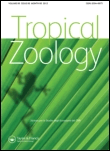
TROPICAL ZOOLOGY
Exploring the vibrant ecosystems of the tropics.TROPICAL ZOOLOGY is a prestigious academic journal dedicated to advancing knowledge and research in the fields of animal science, zoology, and ecology. Published by PAGEPRESS PUBL, this journal has been an integral part of the scientific community since its inception in 1988, providing a platform for the dissemination of innovative research and discoveries related to tropical wildlife and ecosystems. With an impact factor placing it in the Q3 category for both Animal Science and Zoology, as well as Ecology, Evolution, Behavior, and Systematics, it ranks among the noteworthy publications in these fields. Researchers, professionals, and students will find that TROPICAL ZOOLOGY is an essential resource for the latest findings, fostering a deeper understanding of biodiversity and conservation in tropical environments. The journal is based in the United Kingdom, with additional administrative support from MEDIGROUP in Italy, ensuring a broad international perspective and reach. While it does not operate under an open access model, it remains committed to high-quality peer-reviewed content that contributes significantly to the understanding of tropical ecosystems and the species that inhabit them.
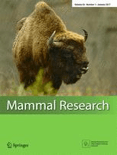
Mammal Research
Pioneering Research in Animal Science and EcologyMammal Research, published by Springer Heidelberg, is a prominent academic journal dedicated to advancing knowledge in the fields of Animal Science, Zoology, Ecology, Evolution, and Behavior. With an impressive Q2 ranking in both Animal Science and Zoology and Ecology, Evolution, Behavior and Systematics as of 2023, this journal is an essential resource for researchers and professionals seeking to publish innovative findings that contribute to our understanding of mammalian biology. The journal operates under an Open Access model, allowing a wide audience to access and engage with high-quality research articles. Converging between 2015 to 2024, Mammal Research serves as a vital platform for scholarly discourse, promoting rigorous scientific inquiry and collaboration among experts and students alike in the fascinating study of mammals.
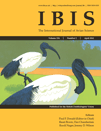
IBIS
Advancing ecological knowledge since 1859.IBIS, published by WILEY, stands as a prestigious journal in the field of animal science, zoology, and ecology since its inception in 1859. With a focus on innovative research that informs the scientific community on ecological dynamics, behavioral studies, and conservation strategies, IBIS fills a critical niche for researchers, professionals, and students alike. The journal is recognized for its robust impact factor and commands a Q1 ranking in three key categories as of 2023, demonstrating its influence and reach within the global academic landscape, particularly in Animal Science, Ecology, Evolution, Behavior and Systematics, and Nature and Landscape Conservation. Although not an open-access publication, its rigorous peer-review process ensures high-quality contributions that advance knowledge in these vital areas. Through interdisciplinary collaboration and comprehensive coverage of cutting-edge topics, IBIS remains an essential resource for those striving to understand and protect our natural world.